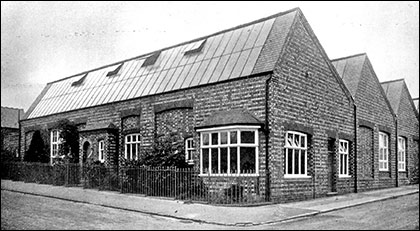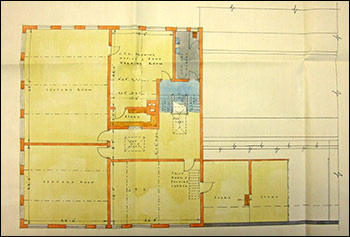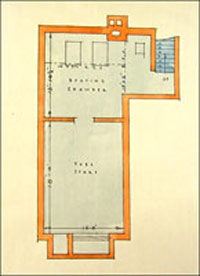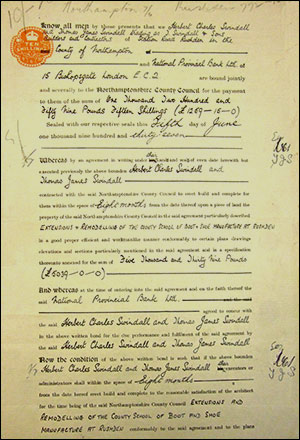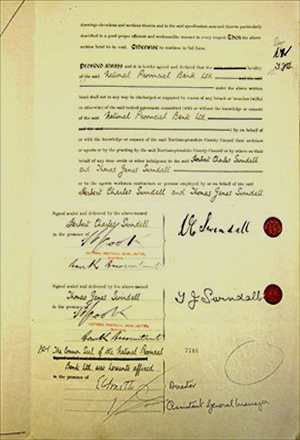|
|||||||||||||
| Article by Sue Comont based on documents in the Northamptonshire Record Office, reference: ZB 86/38/4 - 11 | |||||||||||||
|
The Rushden Boot and Shoe School Extensions, 1937
|
|||||||||||||
|
|||||||||||||
|
The Boot and Shoe School was extended in 1937, and from the Bill of Quantities and Specification of Work to be done, we can not only see what was done to the school, but gain an insight into how such contracts were carried out at that time. First of all, there were general conditions laid down which the contractor had to abide by. Then the work to be done was listed, and this was followed by conditions of work for the different trades - carpenters and joiners, plasterers, smiths and ironfounders, plumbers and glaziers, and painters. The general conditions on the contractor included the following clauses: The Contractor shall cart away all debris and rubbish from time to time and on completion, clean all windows and wash all floors on completion. The Contractor shall pay such rates of wages and observe such hours of labour as are accepted as normal in the industry The Contractor shall at his own cost provide, and at all times keep on the site, first aid equipment The Contractor shall provide, erect, maintain and finally remove, suitable storage sheds for materials. The Contractor shall provide latrines for the use of workmen in positions approved by the county architect and the local authority, and shall keep them in a clean and sanitary condition, removing them and making good on completion. The Contractor shall provide a shed and fuel for the workmen to prepare meals. The work to be done is listed as:
The artificial stone for the extensions was to be obtained from the Excelsior Patent Stone Company at Finedon.
Carpenters and joiners were to provide:
A number of conditions were laid down for the plasters: The cement must on no account be used fresh, but is to be spread out for at least 2 weeks to cool Laths to be riven laths of lath and half strength and free from all defects The lime to be well burnt Buxton Lime of the very best quality and it is to be run for at least 8 weeks before use. NB The site is very restricted and there is no room available for a pit in which to run the lime. The contractor must therefore make arrangements to have this done elsewhere but care must be taken that there will be no chance of any foreign matter being introduced into the lime before use. The hair to be long, strong cow or goat hair, clean and free from grease and all foreign matter, and is to be well beaten. The smith and ironfounder had the following instructions: The whole of the iron and steel work is to be painted with one coat before leaving the works All iron and steel work to be of British manufacture from an approved firm and of the best description, free from flaws, air bubbles and other imperfections Allow the sum of £40 for new Wrought Iron railing and double gates to the Victoria Rd frontage, for re fixing the existing single entrance gate and for lengthening the back stays to the present fencing on the eastern boundary Allow £12 for the provision of a Wrought Iron balustrade and handrails to the staircase Allow £500 for steel windows Allow £90 for steel lantern lights including lead flashing The plumber and glazier’s work was to conform to these conditions: All lead to be best English milled lead, uniform in thickness and texture and free from cracks and other defects To provide 3 new WC sets, including white glazed pedestal basins, and refix 3 WC sets previously specified to be taken out. All glass to be of best quality and well bedded and backed in with Bon Accord Steel Sash Putty made by Farquhar and Gill, North of Scotland Colour Works, Aberdeen Lastly, the painter had rules to obey: All paint other than white must be tinted by the makers and nothing added by the contractors All paint to be supplied in and used from tins bearing the maker’s name, and no other tins to be allowed on site. All paint to be supplied by Nobel Chemical Finishes Ltd of Slough The contract was awarded to T. Swindall and Sons, Builders and Contractors, of Station Road, Rushden and was dated 5 June 1937. The firm was to carry out the works specified for the extending and remodelling of the school in a good, efficient and workmanlike manner, within the space of eight months. The work was to be done for the sum of £5,039, and in order to ensure the terms of the contract were fulfilled, Herbert Charles Swindall and Thomas James Swindall entered into a bond with the National Provincial Bank. The amount of the bond was £1259 15s (75p) and if the firm failed to carry out the work in the time specified and to the satisfaction of the County Council, this money would be due to the Council. The bond was signed by the two Swindalls and the assistant general manager of the bank.
|
|||||||||||||
